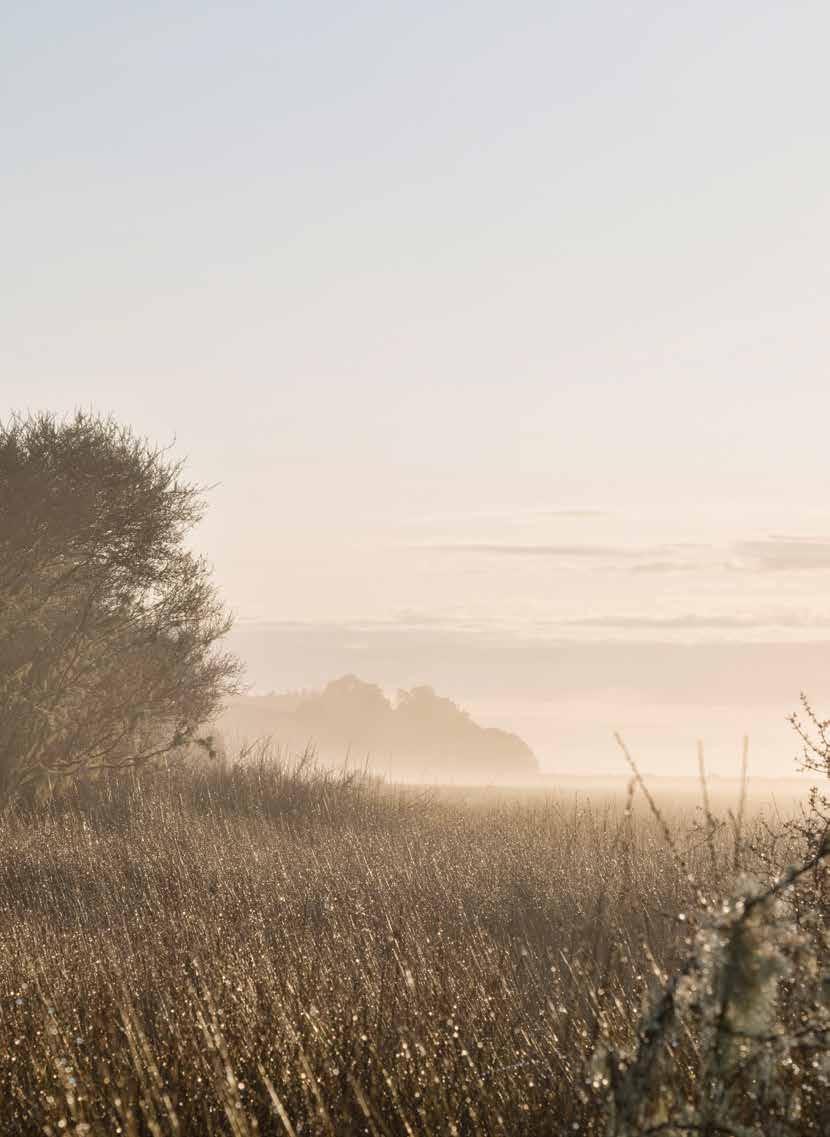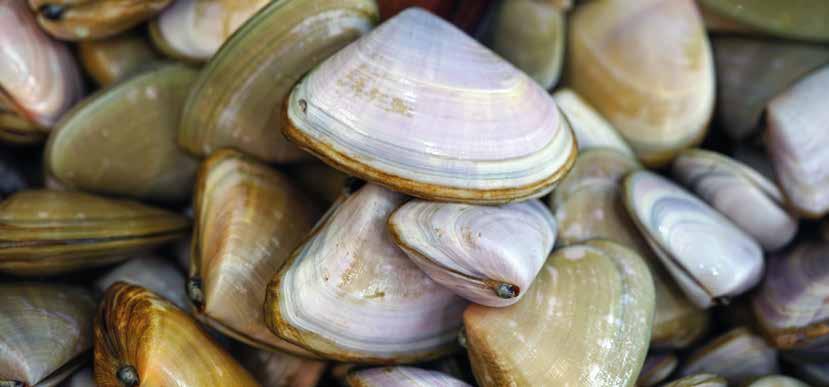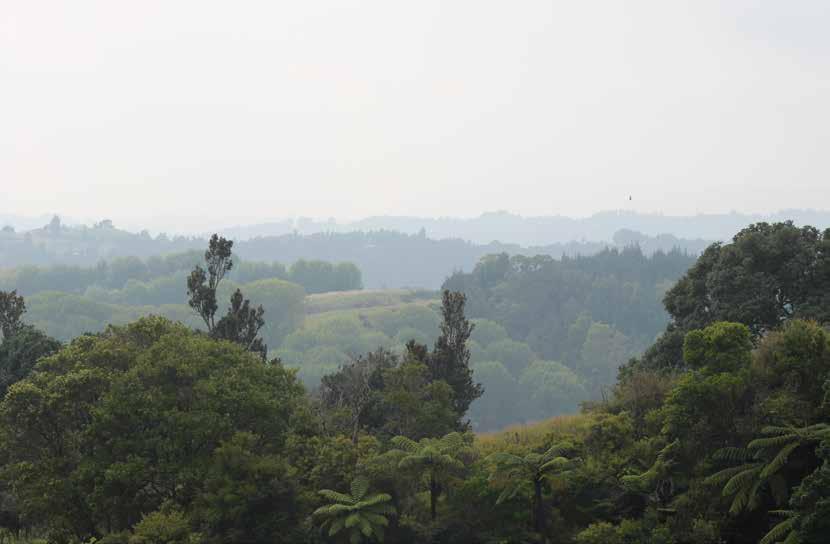
5 minute read
Acknowledegment to Tā Hirini Moko Mead
Kaitiakitanga
GUARDIANSHIP FOR FUTURE GENERATIONS
Represents our obligations to protect our culture, our environment, our resources and our people today and for future generations, in accordance with our cultural practices.
Ōhiwa Harbour Implementation Forum
ESSENTIAL FRESHWATER POLICY PROGRAMME (EFPP)
The EFPP is BoP Regional Council’s work programme to implement the requirements of the National Policy Statement for Freshwater Management 2020 (NPSFM)
TANGATA WHENUA ENGAGEMENT.
Freshwater is a tāonga and integral to the whakapapa of tangata whenua. The NPSFM sets out increased expectation of active involvement of tangata whenua in freshwater management, including recognition and provision of Mātauranga Māori and identifying attributes or indicators relating to compulsory mahinga kai value and any other values identified by tangata whenua and Council. These are critical with respect to setting limits for Freshwater Management Units (FMUs) informing environmental outcomes, and the recognition of Mātauranga Māori monitoring methodologies.
Several Iwi are participating in the Freshwater policy mahi through draft policy consideration or project engagement. AWHI MAI, AWHI ATU, SUSTAINABLE SEAS, NATIONAL SCIENCE CHALLENGE PROJECT (MUSSEL REGENERATION)
(Kai mahi, Professor Dr Kura Paul-Burke and PhD student Megan Ranapia)
• The Awhi Mai, Awhi Atu project is well ahead of the planned schedule. The project was funded from 2019 until June 2023. • In 2019, K4 was the last traditional mussel bed remaining in the harbour with approximately 78,000 mussels. • In 2021 the mussel population has grown to approximately 745,000 mussels throughout the harbour. • A strong measure of success would be if K1 and K2 beds were still there in the future. • In January 2022, tuangi and pipi surveys were undertaken in the harbour and 5 million tuangi were estimated on the western side. Results confirmed that they were smaller than usual which could be attributed to a number of factors. • An unexpected Tītiko bed was discovered along with some scallops and
Horse Mussels.
• Horse Mussels helped clean the water, but these had thin shells due to high acidity in the water. Recreational dredging has had a detrimental effect on their population. • Sea star management trials showed that they were still reproducing and recruiting in the harbour • Different removal methods were being considered including trapping and diver removal. • Sea star sampling had been completed and lab testing showed encouraging results for marine protein, which is important for skin and bones. Using them as food for worm farms were also being considered as an option
Na, Charlie Bluett, Customary Fisheries Manager

Tuna (Longfin eel) Species: Anguilla dieffenbachia
Longfin eels have a complex lifecycle. Most of their life is spent in freshwater, followed by migration to the marine environment for reproduction. Longfins are one of the largest, slowest growing and longestlived eel species in the world. Females can live for over a century, meaning they may be exposed to the impacts of environmental changes over multiple decades and climate change over their lifetime. Large eels play an important role in determining the population structure and these large eels affect species composition, sex ratios and size distribution. Longfin eels breed once in their life and die after spawning. They can produce millions of eggs and large females are more fecund than smaller females. EXPOSURE TO MULTIPLE PRESSURES.


Species that are already facing multiple threats are often considered more vulnerable to climate change. Longfin eels are ranked as “at risk declining” by DoC and “endangered” by the International Union for Conservation of Nature.
Pressures on longfin eels include the commercial eel fishery, in-stream barriers to upstream and downstream migrations, and mortality at Hydro-structures. Roughly one third of the available longfin eel habitat is estimated to be impacted by both Hydroelectric dams and commercial fishing. Drought is recognised as a significant ongoing threat to longfin eel, potentially affecting 50% of the population in New Zealand.
COMPLEXITY IN REPRODUCTION.
Longfin eels have several characteristics that likely increase their vulnerability to climate change. They migrate from freshwater to the Pacific Ocean to spawn, a spawning migration that spans thousands of kilometres. Sex-specific differences in migration time are known with males generally migrating to sea in April, and females during late April and May. The adult migration to the spawning grounds takes approximately 6-9 months. Females that do reach the spawning area must encounter males and spawn and they reproduce in large aggregations. However, the location of their spawning ground is unknown and therefore spawning behaviour has never been observed.
Gender is thought to be determined principally by environmental factors, particularly temperature, meaning sex ratios are vulnerable to changes in temperature. Longfin eels are only found in New Zealand. They can travel up to 300kms inland and are distributed from sea level up to 1150 metres elevation. They can be found in many high-country lakes and rivers.
Na, Charlie Bluett, Customary Fisheries Manager

Taiao Report
JOSEPH HŌHEPA MASON
We acknowledge the passing of Dr Joe Mason whose steadfast and resolute contributions to the protection of our taiao are warmly remembered. Through Joe’s example Ngāti Awa continues to enjoy significant places once vulnerable to irreversible modification. He helped protect the wetlands and flax-dying paru near the yacht club in Whakatāne River, all the rocks at the river mouth, Te Horo at Ōhiwa Harbour, and many, many more waahi tapu and taonga from damage, destruction, and inappropriate development. His example reminds us to be steadfast and determined as we carry on in our exercise of kaitiakitanga.
E tangi kau ana te ngākau, e heke ana a hūpe, a roimata mōu e Koro Joe. Moe mai, moe mai, okioki atu rā, e te rangātira.
Kia pūkeke manawa rahi, kia mau mata-popore, kia whakapūmau i te hihiri ō ngā tāonga ō te Ao Taiao, ō Ngāti Awa, kia kore ai e tihotihoi, hei aitua tai-matemate, ko te whakamutunga, ko whatu ngarongaro, ki tua pō-uriuri:
Be steadfast and resolute, cherish, sanctify, and perpetuate, the dynamics of Ngāti Awa’s environmental and conservation ethos, so that it does not wander aimlessly, to become a casualty of decay, and consequently disappear into obscurity.
Taiao Group is mandated to deliver kaitiakitanga by Te Ara Poutama strategic obligations to protect our environment, promote the relationships of Ngāti Awa people and their culture and traditions with their lands, waters, sites, waahi tapu and other ancestral taonga, today and into the future.







